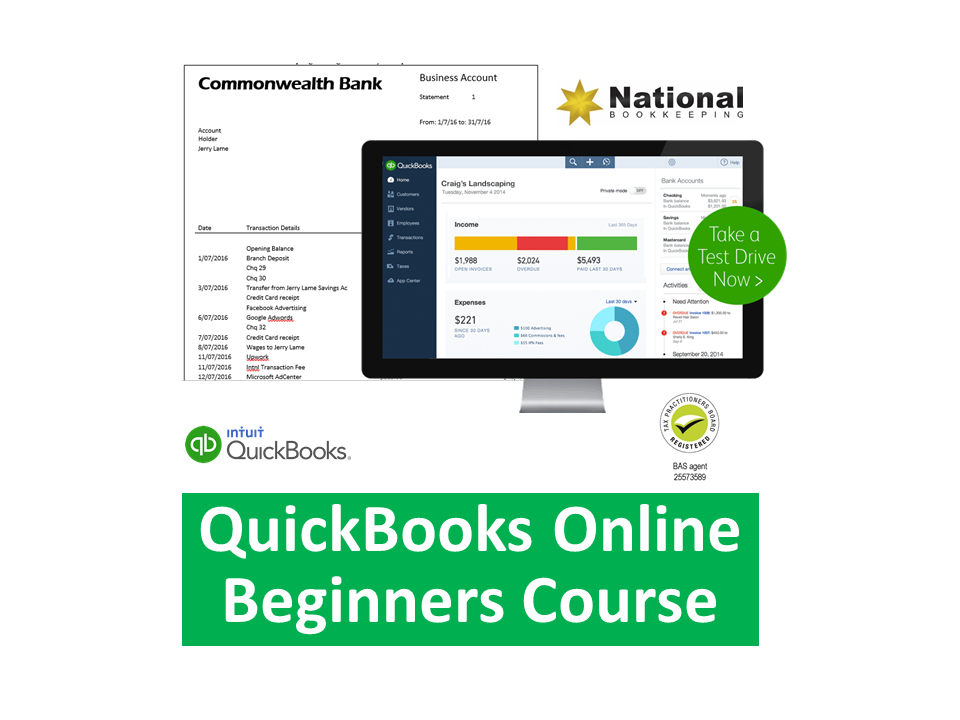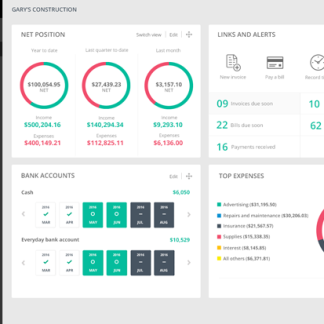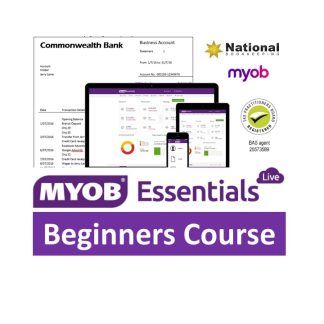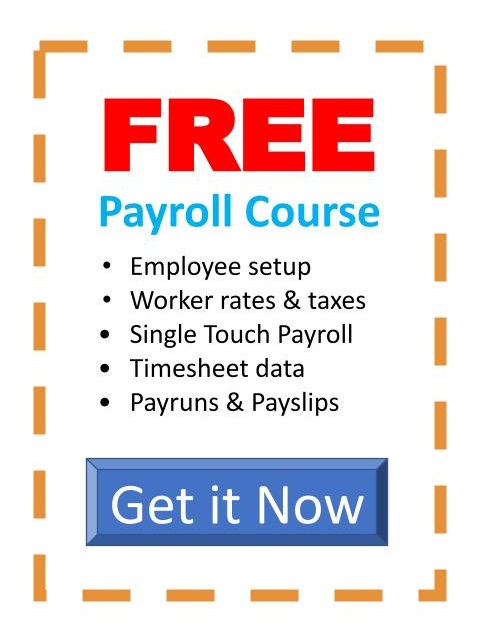Description
QuickBooks Online Accounting & Office Support Training Course
Regular Transactions
All of the transactions and tasks which office admin and junior bookkeepers perform on a daily basis to manage the operational and financial aspects of the business. The purchases, sales, payment receipting and payments made are included but inventory management and reporting is also included for those students working in companies which not only provide services but combine them with products.
Accounting Structure and Bank Accounts
- QuickBooks Daily Tasks Course – Create New Accounts – Creating Your Chart of Accounts
- QuickBooks Daily Tasks Course – Create New Accounts – Add Bank Account
- QuickBooks Daily Tasks Course – Create New Accounts – Add Credit Card
- QuickBooks Daily Tasks Course – Create New Accounts – Modifying Your Chart of Accounts
Customers & Suppliers (CRM) – Data Entry Course
- QuickBooks Data Entry Course – Set Up Contacts – Add New Contact
- QuickBooks Data Entry Course – Set Up Contacts – Edit Existing Contact
- QuickBooks Data Entry Course – Set Up Contacts – Merge Duplicate Contacts
- QuickBooks Data Entry Course – Set Up Contacts – Group Contacts
The Sales Dashboard: Quotes, Invoicing & Payments (Debtors) using QuickBooks Online
Accounts Receivable Training Course
Accounts Receivable or AR is the function for ensuring that customers pay their invoices quickly. In larger organisations these tasks are performed by one or more people. In smaller organisations the person performing AR tasks may also perform Accounts Payable tasks. Some customers try to stretch out the time they take to pay their bills and by doing so they effectively use their suppliers as creditors. The goal of an Accounts Receivable person is to ensure bills are paid when they are due and if they are not to maintain healthy and regular contact with the customer until these funds are received.
- Invoicing & Accounts Receivable Training Course – Create a Sales Invoice
- Invoicing & Accounts Receivable Training Course – Navigating the Sales Dashboard
- Invoicing & Accounts Receivable Training Course – Create a Draft Sales Invoice
- Invoicing & Accounts Receivable Training Course – Email or Print Invoices
- Invoicing & Accounts Receivable Training Course – Create a Branding Theme
- Invoicing & Accounts Receivable Training Course – Create a Quote
- Invoicing & Accounts Receivable Training Course – Accept and Create an Invoice for Quote
- Invoicing & Accounts Receivable Training Course – Copy an Invoice
- Invoicing & Accounts Receivable Training Course – Receive Customer Payment
- Invoicing & Accounts Receivable Training Course – Receive Payment for Multiple Invoices
- Invoicing & Accounts Receivable Training Course – Delete an Invoice
- Invoicing & Accounts Receivable Training Course – Void an Invoice
- Invoicing & Accounts Receivable Training Course – Void Invoice When Payment is Applied
- Invoicing & Accounts Receivable Training Course – Overpayments
- Invoicing & Accounts Receivable Training Course – Create and Allocate a Credit Note
- Invoicing & Accounts Receivable Training Course – Statements
The Purchases Dashboard: Supplier Invoices and Payments, Purchase Orders and Remittances (Creditors) using QuickBooks Online
Accounts Payable Training Course
Accounts Payable or AP is the accounts job that is focussed on paying suppliers. If the business you own or work for has cashflow problems they may try to delay payments as long as possible so that they can use their funds for other expenses of the business. If you work for a larger organisations and this is you only accounts job description then you’ll find yourself talking to the accounts receivable person at your suppliers regularly to ensure a healthy business relationship exists while the credit management function is being managed.
- Purchasing & Accounts Payable Training Course – Create a Supplier Invoice
- Purchasing & Accounts Payable Training Course – Create a Supplier Payment
- Purchasing & Accounts Payable Training Course – Create a Purchase Order
- Purchasing & Accounts Payable Training Course – Print and Send a Purchase Order
- Purchasing & Accounts Payable Training Course – Create a Bill from a Purchase Order
- Purchasing & Accounts Payable Training Course – Internal Bank Transfers
- Purchasing & Accounts Payable Training Course – Send a Remittance
Stock Items and Inventory using QuickBooks Online
- Purchasing & Accounts Payable Training Course – Creating Items
- Purchasing & Accounts Payable Training Course – Purchasing inventory items
- Purchasing & Accounts Payable Training Course – holding stock assets
Funds Transfers and Cash Transactions using QuickBooks Online
- Data Entry & Coding Training Course – Other Transactions – Receive Money
- Data Entry & Coding Training Course – Other Transactions – Prepayments
- Data Entry & Coding Training Course – Other Transactions – Spend Money
- Data Entry & Coding Training Course – Other Transactions – Transfer Money
- Data Entry & Coding Training Course – Other Transactions – Process Contra Deal
Expense Claims using QuickBooks Online
- Data Entry & Coding Training Course – Expense Claims – Add, Edit and Delete Receipts
- Data Entry & Coding Training Course – Expense Claims – Submit Claim for Approval
- Data Entry & Coding Training Course – Expense Claims – Authorise an Expense Claim
- Data Entry & Coding Training Course – Expense Claims – Pay an Expense Claim
Financial Reports Introduction using QuickBooks Online
- Monthly Reporting Training Course – Reports – Balance Sheets
- Monthly Reporting Training Course – Profit and Loss Statements
Bank Reconciliation & Journal Entries Training Course
End of Month, Bank Recs and Journal Entries using QuickBooks Online
A bank reconciliation is performed once all of the day-to-day transactions have been entered into your software (unless you’re doing what is called Rescue Work or Catchup Work). The purpose of this bank reconciliation is to ensure that your software data matches the information in the real world (ie. your bank account).
In the Bank Reconciliation and Journal Entry Training Course we profile a small business startup. The business owner lends the company money for cashflow, buys a car that needs to be depreciated, spends money on advertising and marketing to build awareness, makes some small sales and pays themselves a wage on an ad hoc basis depending on their bank balance.
These business include many trades and professional service organisations like Air conditioning, Plumbing, Building services, trades, Electricians, tilers, painters, audio visual, security and monitoring, pest control, landscape gardeners and more
What’s in this course
Loans from the business to owners and directors requires it’s own compliance checks, but in this section of the course we’ll include the transactions and code you need to enter to keep a record of funds loaned to the business, The purpose of this course is to take students through common entries that occur on a one-off basis and that are not normally part of the quoting, invoicing and payment entries that occur daily. This course contains a bank statement where you’ll need to enter and code the transactions then run a bank reconciliation to discover that there are omissions and errors that you’ll need to fix – you’ll get to see what this looks like and then edit and enter the correct transactions and complete the reconciliation.
It is at this stage that you will enter:
- Income and expense transactions
- Direct debits that come out of your account automatically
- Interest charges or payments
- Capital purchases and payments
- Merchant and bank charges
- Find duplicates or omissions
- Correct existing data
- Locate and correct amounts that are a couple of cents or dollars out because they’ve been entered incorrectly
Technically the bank reconciliation stage is also where most strict accountants, bookkeepers or accounts managers will demand to see evidence of your purchases in the form of a receipt or tax invoice.
Monthly Bank Reconciliation — Loan Account
- Creating a loan account
- Transferring loan funds
- Transaction details and accounts payable
- Setting up accounts payable
- Linked accounts, and
- Editing or deleting a transaction entry
Monthly Bank Reconciliation — Entering Transactions
- Creating customer cards
- Creating inventory items
- Entering a sale and payment
- Spending money
- Receiving money from a clienT
- Reconciling your cheque account to your bank statement
Monthly Bank Reconciliation – International Credit Card Payments
Often the service in overseas countries is cheaper or better or there simply isn’t an available comparative product in Australia so we pay for overseas services. When we do this we don’t pay GST and we incur credit card charges. You’ll learn how to manage
- journal entries
- GST and tax coding, and
- reconciling
Handling Basic Payroll Transactions
If you are a small business you may pay yourself, your partners or even casual workers adhoc amounts each week or month. These transactions need to capture the right codes and also be included in your bank reconciliations. As long the correct amount of tax is paid and the employers’ obligations are met then the business owner is doing everything right. We’ll show you how some small companies manage these transactions.
Purchasing Assets – Company Assets
There will be times when larger equipment is purchased and it’s paid for from your operating cash flow. In this situation the asset isn’t written off as an immediate expense but depreciated every year for a certain number of years. You’ll learn how to code this type of transaction correctly.

















